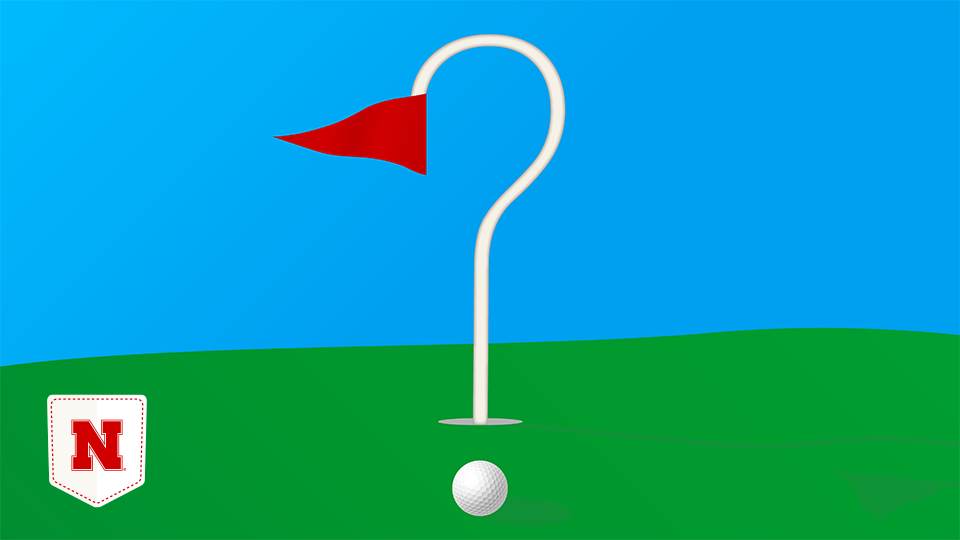
by Scott Schrage | University Communication
In 2019, the PGA Tour enacted a minor but notable rule change: Golfers could, if they chose, leave the flagstick in the hole while putting. The natural question: Should they?
The main benefit, it seemed, was that the flagstick might stop, and potentially drop, a putt that was otherwise rolling too fast to nestle in the cup. But, the thinking went, the flagstick might also deflect putts that didn’t strike its very center.
A few ensuing experiments, and basic analyses of the resulting data, came up with differing answers.
Nebraska’s Chris Bilder, a statistician and avid golfer, decided to take a professional swing at the recreational question. He analyzed data from an experiment that used a ramp system to precisely control the ball’s journey toward the hole. That experiment varied three conditions: the presence of the flagstick; the speed (low, medium, fast) of the ball when reaching the hole; and the ball’s position relative to the flagstick, so that the ball either struck the pin squarely, hit it slightly off-center, or just grazed it.
One of Bilder’s analyses found that if a putt was moving slowly when reaching the hole, there was no meaningful difference between removing vs. leaving in the flagstick. At medium speed, though, the estimated odds of holing a putt were 3.45 times as large with the flagstick out. For a high-speed putt, the estimated odds were instead 10 times as large with the flagstick in — though that advantage seemed to arise mostly when a putt was dead-center.
Read more:
https://news.unl.edu/newsrooms/today/article/statistician-runs-numbers-on-leaving-removing-flagstick-during-putts/